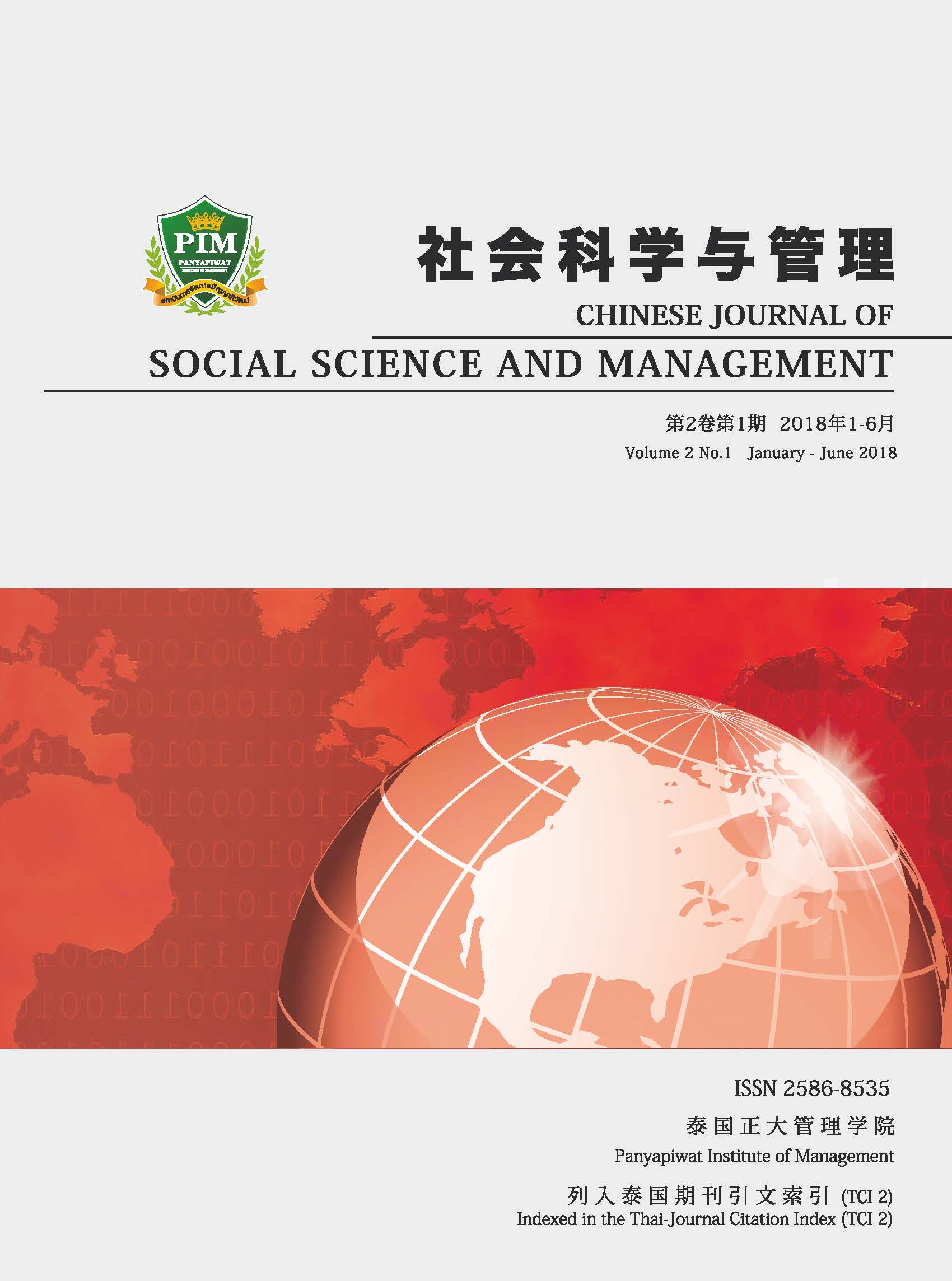EXPLORATIVE RESEARCH OF THE RELATIONSHIP BETWEEN SERVICE FAILURE ON CUSTOMER’ S PERCEIVED EQUALITY, TRUST AND PURCHASE INTENTION: THE CASE OF THE SAMSUNG NOTE 7
Main Article Content
Abstract
The purpose of this study is to explore the trust effect among the perceived equity and repurchase
intention of service failure after compensating remedy for Samsung Note 7 battery explosion event.
200 effect questionnaires were conducted and further 3 interviews were followed to explore the remedy
initiatives influence on relationship among trust, perceived equity and repurchase intention.
The result shows remedy initiatives will compensate the perceived fairness, and further positively
significantly influence trust for SAMSUNG brand and repurchase intention.
Article Details
Chinese Journal of Social Science and Management Editorial Division
The Office of Research and Development, Panyapiwat Institute of Management
85/1 Moo 2, Chaengwattana Rd., Bang Talat, Pakkred, Nonthaburi 11120, Thailand
Tel. 02 855 01048 E-mail: cjssm@pim.ac.th
References
Blackwell, R. D., Miniard, P. W. & Engel, J. F. (2001). Consumer behavior (9th ed.). Mason: OH, South–Western.
Doney, P. M. & Cannon, J. P. (1997). An examination of the nature of trust in buyer–seller relationships. The Journal of Marketing, 61(2), 35-51.
Dyer, J. H. & Chu, W. (2000). The determinants of trust in supplier-automaker relationships in the US, Japan, and Korea. Journal of International Business Studies, 31(2), 259-285.
Engel, J. F., Blackwell, R. D. & Miniard, P. W. (1995). Consumer Behavior ( 8th ed.). NY: The Dryden Press.
Folkes, V. (1984). Consumer reactions to product failure : an attributional approach. Journal of Consumer Research, 10(4), 398-409.
Gefen, D. (2000). E-commerce: the role of familiarity and trust. Omega, 28(6), 725-737.
Gregoire, Y. & Fisher, R. J. (2008). Customer betrayal and retaliation: when your best customers become your worst enemies. Journal of the Academy of Marketing Science, 36(2), 247-261.
Grewal, D., Monroe, K. B. & Krishnan, R. (1998). The effects of price–comparison advertising on buyers’ perceptions of acquisition value, transaction value, and behavioral intentions. The Journal of Marketing, 62(2), 46-59.
Hoffman, K. D., Kelley, S. W. & Rotalsky, H. M. (1995). Tracking service failures and employee recovery efforts. Journal of Services Marketing, 9(2), 49-61.
Holloway, B. B. & Beatty, S. E. (2003). Service failure in online retailing: a recovery opportunity. Journal of Service Research, 6(1), 92-105.
Huppertz, J. W., Arenson, S. J. & Evans, R. H. (1978). An application of equity theory to buyer-seller exchange situations. Journal of Marketing Research, 15(2), 250-260.
Kini, A. & Choobineh, J. (1998). Trust in electronic commerce: definition and theoretical considerations. Proceedings of the Thirty-First Annual Hawaii International Conference on System Sciences, Vol. 4, 51.
Levesque, T. J. & McDougall, G. H. G. (2000). Service problems and recovery strategies: an experiment. Canadian Journal of Administrative Sciences, 17, 20-37.
Lewicki, R. J., McAllister, D. J. & Bies, R. J. (1998). Trust and distrust: New relationships and realities. Academy of Management Review, 23(3), 438-458.
Lu, C. C. (2008). The Library Contextual Effect on Relationship between Feminine Leadership Characteristics and Leadership Effectiveness of Middle Managers in the University Libraries in Taiwan. National Taiwan University. Department of Library and Information Science, National Taiwan University.
Maxham III, J. & Netemeyer, R. (2003). Firms reap what they sow: The effects of shared values and perceived organizational justice on customers evaluations of complaint handling. Journal of Marketing, 67(1), 46-62.
McColl-Kennedy, J. R. & Sparks, B. A. (2003). Application of fairness theory to service failures and service recovery. Journal of Service Research, 5(3), 251-266.
Morgan, R. M. & Hunt, S. D. (1994). The commitment–trust theory of relationship marketing. The Journal of Marketing, 58(3), 20-38.
Rousseau, D. M., Sitkin, S. B., Burt, R. S. & Camerer, C. (1998). Not so different after all: A cross-discipline view of trust. Academy of Management Review, 23(3), 393-404.
Reichheld, F. & Schefter, P. (2000). E-loyalty: your secret weapon on the web. Harvard Business Review, 78(4), 105-113.
Smith, A. & Bolton, R. (1998). An experimental investigation of customer reactions to service failure and recovery encounters: paradox or peril? Journal of Service Research, 1(1), 65-81.
Smith, A. K., Bolton, R. N. & Wagner, J. (1999). A model of customer satisfaction with service encounters involving failure and recovery. Journal of Marketing Research, 36(3), 356-372.
Smith, R. E. & Swinyard, W. R. (1982). Information response models: An integrated approach. The Journal of Marketing, 46(1), 81-93.
Spreng, R. A., Harrell, G. D. & Mackoy, R. D. (1995). Service recovery: Impact on satisfaction and intentions. Journal of Service Marketing, 9(1), 15-23.
Swanson, S. R. & Kelley, S. W. (2001). Attributions and outcomes of the service recovery process. Journal of Marketing Theory and Practice, 9(4), 50-65.
Tax, S. S. & Brown, S. (1998). Recovering and learning from service failure. Sloan Management Review, 40(1), 75.
Weiner, B. (1985). An attributional theory of achievement motivation and emotion. Psychological review, 92(4), 548-573.
Utz, S., Matzat, U. & Snijders, C. (2009). On–line Reputation Systems: The Effects of Feedback Comments and Reactions on Building and Rebuilding Trust in On-line Auctions. International Journal of Electronic Commerce, 13(3), 95-118.


